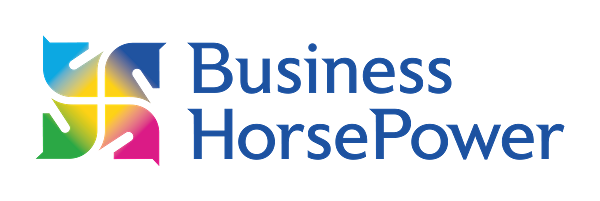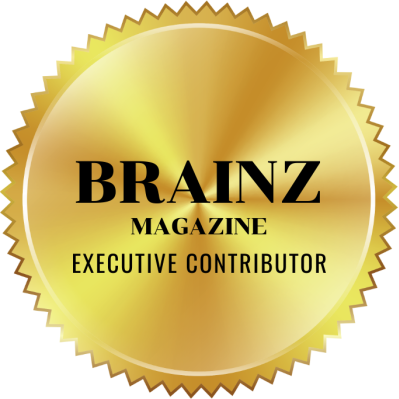
by Julia Felton | Mar 13, 2025
In today’s fast-changing, unpredictable world, the leaders who thrive are not those who rely on past successes, rigid structures, or outdated management playbooks. Instead, the 21st century demands adaptive, forward-thinking, and continuously evolving leadership—a model built on reinvention.
Why Leadership Must Be Reinvented Now
The traditional models of leadership were built for a more stable and predictable world. Hierarchical structures, top-down decision-making, and long-term strategic plans worked in an era of slow-moving change. However, today’s world operates at an accelerated pace, driven by technology, globalisation, economic uncertainty, environmental shifts, and societal expectations.
The Data Speaks: Change Is No Longer an Event—It’s Continuous
- 60% of businesses report that they need to reinvent themselves every three years or less just to survive
- One out of three public companies will cease to exist in their current form over the next five years—a failure rate six times higher than forty years ago
- The average lifespan of an S&P 500 company has dropped from 33 years in 1964 to just 12 years projected by 2027
- A Harvard Business Review study found that 75% of business transformations fail, largely because they approach change as a one-time initiative instead of an ongoing process.
Titanic Syndrome: The Danger of Holding on to the Past
One of the biggest threats to leadership today is what’s called Titanic Syndrome—when leaders and organisations, faced with disruption, create their own downfall by clinging to past successes, refusing to adapt, or ignoring emerging realities
- Nokia ignored the shift to smartphones.
- Kodak invented digital photography but failed to capitalize on it.
- Blockbuster laughed at Netflix’s online streaming model.
Each of these companies had the opportunity to reinvent, yet they chose stability over evolution—and paid the price.
The same applies to leadership. If leaders today fail to adapt, evolve, and reinvent their leadership approach, they risk becoming obsolete—just like the organizations they lead.
How to Reinvent Leadership for the 21st Century
Reinvention isn’t just a business strategy—it’s a leadership mindset and a system. And with 45% of CEO’s believing their business will not be viable in 10 years if it stays on the same path, it is now a leadership imperative.
Here’s a practical, action-oriented framework for leaders who want to future-proof their leadership and create organisations that thrive in disruption.
- Build a Reinvention Mindset: Adopt Nature’s Approach to Leadership
Nature is the greatest teacher of reinvention. The seasons change, ecosystems adapt, and animals evolve to new environments. Leaders should take inspiration from nature’s cycles of reinvention:
- Winter (Reflection & Renewal) → Step back, assess, and let go of outdated methods.
- Spring (Growth & Experimentation) → Test new strategies, encourage creativity, and allow fresh ideas to emerge.
- Summer (Execution & Scaling) → Double down on what’s working and build momentum.
- Autumn (Harvest & Preparation) → Celebrate wins, document lessons, and prepare for the next reinvention cycle.
👉 ACTION: Schedule quarterly “Seasons of Leadership” reviews where you assess what needs to be let go, nurtured, tested, scaled, and celebrated.
- Shift from Managing Stability to Leading Continuous Change
Leaders can no longer afford to react to change; they must anticipate, design, and implement it continuously.
Key Shifts in Leadership Thinking
| Old Leadership Model |
New Reinvention Model |
| Change is a one-time project |
Change is a continuous system |
| Top-down decision-making |
Decentralized, empowered teams |
| Rigid long-term plans |
Agile, adaptable strategies |
| Risk avoidance |
Experimentation & calculated risks |
| Control and efficiency |
Innovation and flexibility |
|
👉 ACTION: Use the Titanic Syndrome Diagnostic to evaluate where your leadership style may be clinging to outdated success patterns
- Reimagine Your Leadership Role: Become a Chief Reinvention Officer
To succeed in the 21st century, leaders must go beyond traditional leadership models. You need to become a Chief Reinvention Officer—someone who anticipates change, designs new strategies, and implements transformation continuously.
The Reinvention Leadership Model
A reinvention-ready leader must master these six pillars:
- Anticipation → Actively scan for emerging trends before they become disruptions.
- Experimentation → Test new ideas rapidly with a “fail fast, learn fast” mindset.
- Collaboration → Break silos and encourage cross-functional, cross-industry learning.
- Sustainability → Lead with long-term adaptability, not just short-term gains.
- Resilience → Create a culture that embraces uncertainty and sees change as an opportunity.
- People Empowerment → Equip teams with the skills, autonomy, and mindset to adapt.
👉 ACTION: Shift your leadership approach from command and control to inspire and empower—let your team lead reinvention at all levels.
- Reinvent Team Collaboration: From Hierarchies to Networks
Traditional hierarchical leadership no longer works. Teams today thrive in decentralised, agile, and purpose-driven environments.
How to Reinvent Your Team Structure
| Traditional Teams |
Reinvented, Agile Teams |
| Rigid hierarchy |
Flat, cross-functional collaboration |
| Fixed job roles |
Fluid roles based on strengths & projects |
| Top-down decision-making |
Empowered, self-directed teams |
| Siloed departments |
Cross-functional networks |
|
👉 ACTION: Introduce “Reinvention Labs”—teams dedicated to testing new ideas, processes, and leadership styles in small, controlled experiments.
- Build a Reinvention System: Make Change Part of Daily Operations
The best leaders don’t just talk about reinvention—they bake it into their organisation’s DNA.
How to Build a Reinvention System
- Create a “Reinvention Budget”—allocate resources specifically for innovation and experimentation.
- Measure What Matters—track metrics beyond financials, such as agility, adaptability, and team engagement.
- Celebrate Failure—reward learning and risk-taking, not just results.
- Make Learning a Non-Negotiable—continuous learning should be embedded in daily work, not just in annual training sessions.
👉 ACTION: Implement a “Reinvention Scorecard” to track how often your team is experimenting, adapting, and learning from failure.
The Future of Leadership Belongs to Reinventors
The leaders of the future will not be the ones who hold on to outdated structures, methods, or mindsets. They will be the ones who embrace change, continuously reinvent, and lead with adaptability.
Your Next Steps as a Reinvention Leader
- Adopt Nature’s Reinvention Cycles—schedule seasonal leadership reviews.
- Use the Titanic Syndrome Diagnostic to identify outdated leadership habits.
- Empower Teams Through Reinvention Labs—let teams lead innovation.
- Shift From Stability to Agility—lead reinvention, not just change.
- Build a Reinvention System—make continuous learning and innovation part of daily operations.
💡 Final Thought: Reinvention is not a one-time project—it’s a way of life for 21st-century leaders. The question is not whether you need to reinvent, but how fast you can start.
Are you ready to become a Chief Reinvention Officer?

by Julia Felton | Feb 14, 2025
Why Leading with Heart Matters More Than Ever
In today’s fast-paced world, change is constant, and uncertainty is everywhere. The news is filled with stories of economic instability, global challenges, and workplace stress. As business leaders, it’s easy to get swept up in the chaos, leaving us feeling disconnected—from ourselves, our teams, and even our purpose.
Yet, despite the pressures, we always have a choice. We can react to challenges with frustration and fear, or we can embrace heart-centred leadership—a leadership style that fosters resilience, connection, and clarity even in turbulent times.
The Power of a Heart-Led Leader
The most effective leaders don’t just lead with their minds; they lead with their hearts. By cultivating trust, authenticity, and emotional intelligence, they inspire others, create stronger teams, and build organisations that thrive. Research from the Institute of HeartMath shows that emotions such as appreciation, care, and compassion lead to physiological coherence. This state enhances decision-making, reduces stress, and boosts overall performance.
A heart-centred leader embodies:
✔️ Appreciation – Recognising contributions and celebrating successes.
✔️ Compassion – Supporting their team, particularly in times of challenge.
✔️ Authenticity – Leading with honesty and vulnerability to build trust.
✔️ Connection – Creating meaningful relationships that strengthen collaboration.
Daily Practices to Lead from the Heart
Integrating heart-centred practices into your daily routine can significantly improve your leadership impact. Consider these simple yet powerful habits:
⭐ Begin your day with gratitude – Take a moment to reflect on what’s going well. A gratitude practice shifts your mindset and builds resilience.
⭐ Set positive intentions before interactions – Whether it’s a meeting or a conversation, pausing to cultivate a positive mindset enhances connection.
⭐ Listen with empathy – Give your full attention during discussions, focusing on understanding rather than just responding.
⭐ Reframe negative thoughts – When challenges arise, avoid dwelling on problems. Instead, shift your focus towards solutions and possibilities.
⭐ Foster meaningful connections – Make time to check in with your team, not just about work, but about their well-being. Strong relationships fuel productivity and engagement.
The Science Behind Heart Coherence
Leading with heart is more than just a feel-good concept—it’s backed by science. Heart coherence occurs when our heart, brain, and emotions are in sync, creating a state of harmony that improves performance and well-being. According to HeartMath:
✅ Coherence enhances clarity, intuition, and decision-making.
✅ Stress and fear create incoherence, reducing problem-solving ability.
✅ Heart-led leadership fosters team cohesion and strengthens workplace culture.
Why Horses Help Leaders Open Their Hearts
One of the most powerful ways I help leaders develop heart-centred leadership is through equine-assisted experiences. Horses, as highly sensitive and intuitive beings, provide immediate feedback on our coherence and presence. Their natural ability to sense authenticity makes them exceptional partners in leadership development.
Time and again, I witness profound shifts in my clients when they interact with the horses. Many experience an immediate sense of calm, clarity, and connection. Using HeartMath’s Inner Balance and emWave technology, I’ve measured these physiological changes in real-time. As leaders open up, they reconnect with their authentic selves—the part often hidden in corporate environments.
It’s not uncommon for participants to feel deeply moved during these sessions, sometimes even shedding tears. That’s because true leadership isn’t about leaving emotions at the door—it’s about embracing them, using them wisely, and leading with heart.
Are You Ready to Lead with Heart?
This Valentine’s Day, let’s redefine leadership—not just as a skillset, but as a heartset. If you’re ready to deepen your impact, strengthen connections, and lead with authenticity, let’s talk.
📩 Message me to book a heart-centred leadership session with the horses and experience the power of true connection.
(Article inspired by the Institute of Heart Math, Tips for Heart Based Living)
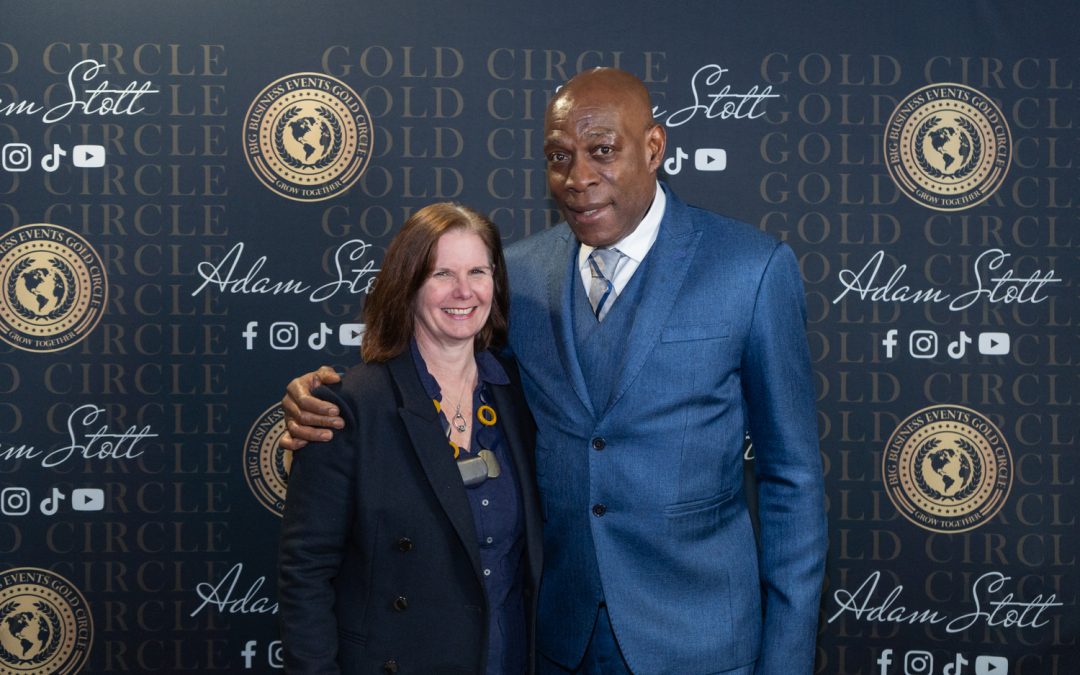
by Julia Felton | Feb 7, 2025
Few people have the opportunity to meet a true sporting legend, but recently, I had the privilege of meeting Frank Bruno, the former world heavyweight boxing champion. Meeting him invoked childhood memories as my dad always used to impersonate him and his banter with legendary sporting commentator Harry Carpenter, as he was infamous for always saying “Know what I mean, Harry?”
Listening to his stories and reflecting on his journey, I realised there were profound lessons in his resilience, discipline, and mental strength. Frank’s life, both in and outside the ring, offers valuable insights for business leaders, teams, and anyone striving to overcome challenges and achieve greatness.
Here are three key lessons I took away from my encounter with Frank Bruno.
1. Resilience: Bouncing Back from Setbacks
Frank Bruno’s boxing career was filled with both triumphs and setbacks. He fought some of the greatest heavyweights of his era, including Mike Tyson and Lennox Lewis. Despite crushing defeats, he never abandoned his dream of becoming a world champion. In 1995, after multiple attempts, he finally won the WBC heavyweight title, proving that persistence and resilience pay off.
In business and leadership, setbacks are inevitable. The key is how we respond to them. Many teams and leaders get discouraged when things don’t go as planned, but resilience means learning from failures, adapting strategies, and coming back stronger.
Key takeaway: Don’t let setbacks define you. Instead, let them refine you. Just as Frank Bruno kept stepping back into the ring despite losses, business leaders must embrace challenges, pivot when necessary, and keep moving forward toward their goals.
2. Discipline and Hard Work: The Foundation of Success
Boxing isn’t just about physical strength; it demands immense discipline and dedication. Frank Bruno was known for his rigorous training regime and unwavering commitment to his craft. He understood that success in the ring wasn’t achieved overnight—it was built through years of sacrifice, discipline, and relentless effort.
In leadership and teamwork, the same principles apply. Success doesn’t happen by chance. It results from consistent effort, strategic planning, and disciplined execution. Whether developing a high-performing team or executing a business strategy, discipline forms the foundation that turns aspirations into reality.
Key takeaway: Success is built on daily habits and small, consistent efforts. Whether you’re leading a team or running a business, discipline and hard work will always be your best allies in achieving long-term success.
3. Mental Toughness: Strength in Adversity
Frank Bruno’s battles weren’t just in the boxing ring. He has openly shared his struggles with mental health, showing incredible courage in discussing a topic often stigmatised, especially in sports. His openness and determination to overcome personal challenges are as inspiring as his victories in the ring.
Leaders and business owners face intense pressure, uncertainty, and moments of self-doubt. The ability to remain mentally strong, even in adversity, separates great leaders from the rest. Mental toughness doesn’t mean ignoring emotions or pretending problems don’t exist. It means developing the inner strength to navigate difficulties with clarity, confidence, and resilience.
Key takeaway: Mental health and emotional resilience are just as important as physical strength. Prioritise self-care, seek support when needed, and cultivate a mindset that enables you to navigate challenges with courage and perseverance.
Final Thoughts
Meeting Frank Bruno was an unforgettable experience that reinforced the importance of resilience, discipline, and mental toughness. Whether in sports, business, or life, these qualities are essential for overcoming obstacles and achieving greatness.
As business leaders, we may not be stepping into a boxing ring, but we face our own battles daily. By embracing the lessons from Frank’s journey—staying resilient in setbacks, committing to discipline and hard work, and strengthening our mental resilience—we can achieve extraordinary success in our own arenas.
So, the next time you face a tough challenge, ask yourself: What would a champion do? Then, step forward with the mindset of a true fighter.
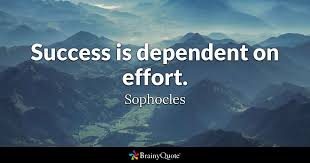
by Julia Felton | Oct 21, 2019
Recently I
was attending some sales training and we were discussing the difference between
a fixed and growth mindset. In essence a fixed mindset believes that everything
is as it is for a reason and we really can’t change that. Contrast this with a
growth mindset where we are always looking for opportunities to learn and
develop. There is no such thing as
failure only learning opportunities. People with a growth mindset are continually
looking to improve whilst those with a fixed mindset are often looking for
someone to blame.
As I listened
to the training and reflected on my own position I realised that I can often be
a combination of the two. Most of the time I have a growth mindset. After all I
create experiences for people to stretch out of their comfort zone and grow.
However, I realised that often when it comes to sales I have a fixed
mindset. I keep trying all kinds of things
and when they don’t work I blame my products, services or imperfect execution.
Then the
trainer said something that hit hard. He said that when it came to sales the
difference in success between the fixed and growth mindset all came down to
EFFORT. This floored me. I had always
thought I was putting in enough effort but I guess if I am really honest I
haven’t been.
These are
the skills I have not been cultivating when it comes to putting EFFORT into
sales conversations.
Enthusiasm – often I just dread the sales process.
It can seem sleezy and forceful and I know that this comes from being the recipient
of some less than ethical sales tactics that have left me with buyers remorse
as I have invested in programmes and services I never really needed. God forbid that anyone would see me like that.
Focus – success in sales requires focus
and consistency. You need to be laser like in identifying the solution that you
offer and who it serves. You need to be confident that your solution meets their
needs. Any wavering or doubt on your part and the potential buyer will sense
this and so never conclude the purchase.
Follow
Through – according
to the latest research it can take upto 12 touch points to convert a prospect
to a client. That’s an awful lot of
interactions. So it is imperative to continue to follow up with people. Even
those that say No, because a No often means not just now.
Overcome
Objections –
mastering how to overcome objections is essential if you are to be successful
at sales. Think ahead to some of the common objections that your prospects have
and craft answers to these. Typically they will involve the price, so ensure
that you always help the client understand the return on investment (ROI) of
working with you. A good rule of thumb is that you should be able to deliver
10x value. In other words if your service costs £10,000 then the client should
be able to achieve a £100,000 cost saving or revenue uplift.
Resilience
– given that only
some 3% of people and waiting and willing to buy when you connect with them the
prospect of you getting no response is really high. This means that you need
resilience to pick yourself back up and try again. Remember a No is often this is not right for
us right now. Try this game and see how many No’s you can get in a day. Every
No takes you closer to getting a yes, so embrace the process and don’t take No
personally. It is never a reflection on you
Trust – the great thing about having to
have multiple contact points with someone before they purchase means that you
have the opportunity to build trust. Always be in service to the other person
and never be afraid to withhold your services if you don’t think they are a
right fit for the prospect. You will earn significant levels of trust by
referring them to another supplier or solution and in my experience they will
return in due course.
So when you are thinking about sales please make
sure you put in enough EFFORT or else the process simply won’t work. Now I’m off to start changing some habits and this
new found wisdom

by Julia Felton | Jul 14, 2019
Great leaders are those people that can view any situation through multiple lenses, and so find different perspectives that can yield different results. I’m sure many of you will be familiar with the three positions of perspective. This is an NLP phenomenon that, in essence, states that there at least three viewpoints through which you can look at any situation. The three perspectives are through the lenses of:
- Self
- The Other Person
- The Observer
The perspective of self is naturally your own viewpoint. For example, you might think that designing a product to solve your book closing is not possible. From the other’s perspective, they might believe it is absolutely possible; whilst the observer, who typically has no vested interest in the outcome, can see another viewpoint altogether.
Emerging Leaders
This is exactly the situation I found myself in recently as I was mentoring a group of high school students to create their own business and develop their entrepreneurial flair for a competition called Young Enterprise. When we started out, the students launched gung ho into the project, determined to create an amazing product without undertaking much market research. And big surprise: the first product idea they came up with failed.
However, looking at the project through a new lens, they sought to develop a product that would solve a real problem that they all faced. That was when Page Keep was born, because their biggest frustration was how to keep their textbooks open on the right page when they were studying. Most of the books kept shutting, wasting valuable time and energy as the students had to find the page again.
When they first shared the idea with me, I must confess to being somewhat skeptical — but I quickly realized that was my lens. I was being constrained by my past experiences. However, the students had no fear and, unconstrained by rules, assumed that anything is possible and achievable. So off they went to their Design and Technology Lab to experiment making prototypes. Yes, some failed — but eventually they came up with a great design that was really functional and based on their market research of what the other students wanted to buy.
However, what happened next really highlighted to me how narrow my lens of innovation had become. The students were not content with making their Page Keep from any old plastic. No, if they were to make a product, it had to be environmentally friendly and sustainable. So with no prompting, as if it were the most natural thing in the world, they went and sourced the UK’s only supplier of recyclable plastic and persuaded them to permit them to have a just-in-time delivery schedule. Furthermore, they designed the product in an interlocking design so as to minimize wastage. How inspired is that?
There are the three lessons I have learnt from this emerging generation of leaders.
1. When things aren’t working out, stop and see if there is another solution. All too often in business we keep ploughing on with the same old strategies, which aren’t yielding the results we want, and we never think to try something new. The students rapidly realized their first product wasn’t viable and so created something new.
2. Often it is only a minor change in perspective and approach — in other words a pivot — that can catapult the situation to very different results. Through realizing they could personalize the Page Keeps, a whole new market and revenue stream opened up for them.
3. Once you have seen the situation through a different lens, then results accelerate as momentum drives you towards the goal. For the students, once they saw the initial success of their product, they were able to make incredible sales and the leverage this into selling workshops to teach other students what to do.
These emerging leaders are ambitious, enthusiastic, hardworking, and see endless possibilities around them. Maybe that is why they are such great ambassadors for saving our planet.
I’m curious: what inspiring lessons are you learning from our emerging leaders that are really forcing you to rethink the way you see the world and the lenses you are using to filter information?
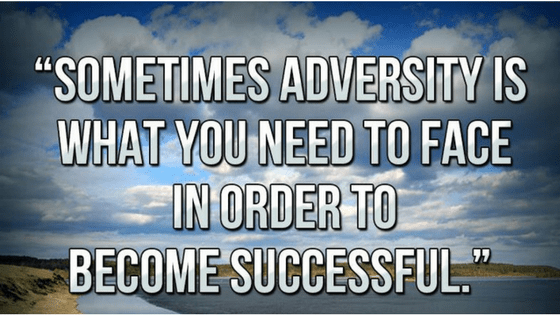
by Julia Felton | Aug 30, 2017
It’s a fact of life that adversity happens but it is the way that we handle it that helps defines who we are and what type of person you are. How do respond when things don’t go to plan? Do you become dominant and aggressive, or do you disconnect from life and hide out?
We’ve all experienced difficult times in our work or home lives, often through events and circumstances outside our control. But like great trees, humans grow stronger when exposed to powerful winds. Here are 10 suggestions for dealing with the hard times when they happen.
1. Take responsibility. Assume an “I can do something” attitude rather than pointing fingers. If nothing else, you can control your own response to the situation.
2. Limit the focus. Don’t let the problem become all encompassing. When you compartmentalize the difficulty, you can focus on a workable solution.
3. Be optimistic. The ultimate belief in life as positive, even with hard-times and troubles, will result in positive behaviours and positive actions.
4. Think creatively. Approach the problem from new and different directions. Trust your creativity.
5. Have courage. Having courage doesn’t mean you’re not afraid. It means that you don’t let the fear get in the way of doing what you need to do.
6. Take action. Handling the day-to-day details can keep you from getting bogged down in the mud of adversity. Determine what can be done, and do it.
7. Take the long-range view. Remember that “this too shall pass.” Recount other times when you have overcome challenges.
8. Maintain a sense of humour. Even in the darkest times, laughter can help ease the pain.
9. Get support. No need to do it alone. Ask for help.
10. Don’t quit. Persistence may be the greatest of human qualities that help us overcome adversity. Consider how water smoothes stones and wind sculpts cliffsides
I really hope these top tips on handling adversity help you, they have helped me no end.

by Julia Felton | Jul 12, 2017
Are you ready to break free?
Today I wanted to share the words of Natasha Bedingfield’s song called Wild Horses.
These words really resonate with me right now and I know that often many of my clients feel trapped in their lives and wish they could be free.
The great news is that we all the have ability to Grab The Reins and Lead Our Life, so if you are feeling stuck right now register for one of limited number of complimentary discovery sessions I offer each month.
During our call you will:
- Uncover hidden opportunities to create more income in your business
- Discover how you may be unconsciously sabotaging your business and its success and break through those limitations
- Create a clear plan that describes in detail the steps you need to unleash the hidden potential in your business
- The one simple step you can take immediately to get into action
Click the link here to register for one of the limited number of complimentary discovery sessions.
Ooooh I feel these four walls closing in
Face up against the glass
I’m looking out, hmmm
Is this my life I’m wondering
It happened so fast
How do I turn this thing around
Is this the bed I chose to make
It’s greener pastures I’m thinking about
Hmm, wide open spaces far away
All I want is the wind in my hair
To face the fear but not feel scared
Ooh, wild horses I want to be like you
Throwing caution to the wind,
I’ll run free too
Wish I could recklessly love like I’m longing to
I want to run with the wild horses
Run with the wild horses, oh Yeah, oh oh, ye-yeah
I see the girl I want to be
Riding bare-back, care-free
Along the shore
If only that someone was me
Jumping head-first, head-long
Without a thought
To act and down the consequence
How I wish it could be that easy
But fear surrounds me like a fence
I want to break free
All I want is the wind in my hair
To face the fear, but not feel scared
Oooh, wild horses I want to be like you
Throwing caution to the wind, I’ll run free too
Wish I could recklessly love like I’m longing to
I want to run with the wild horses
Run with the wild horses, oh
I want to run too
Oooh oh oh oh
Recklessly emboundening myself before you
I want to open up my hear
Tell him how I feel, ooh ooh
Oooh, wild horses I want to be like you
Throwing caution to the wind, I’ll run free too
Wish I could recklessly love like I’m longing to
I want to run with the wild horses
Run with the wild horses
Run with the wild horses
Ooh ooooh ooh ooh ye-yeah yeah oohh
I want to run with the wild horses, ooooh
Did you enjoy that?. Did you resonate with the words and are you ready to break free and grab the reins? If you are then please connect with me and let’s have a conversation about how I can help you.
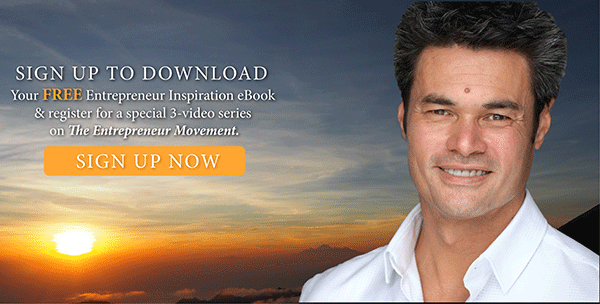
by Julia Felton | May 17, 2017
As an entrepreneur one of my values is continual learning. I can’t get enough of it because I know that every time I learn something new I grow and new opportunities open up for me. And you don’t have to just be an entrepreneur to keep learning, anyone has the opportunity to keep learning. And today continual learning is even easier due to the mass of free educational material available on the internet.
This is one of my favourite quotes on learning: “If you are not willing to learn no-one can help you. If you are determined to learn no-one can stop you”. Learning and education are key tools that you can use in business and life to expand your circle of influence, create new contacts and help uplevel your own confidence levels. The more you know the more you can share your knowledge with others and help them along the journey.
I know that at a deep level I love educating people about the possibilities that are available to them. That’s one of the reasons I am a trainer, coach and consultant. It allows me to fulfil my purpose of being in service to others and helping them realise their hidden potential. One of the teachers on my journey has been Roger Hamilton. He is the creator of Wealth and Talent Dynamics and the founder of GeniusU. What I love about his teaching is the way that all his work is based on the five elements and he manages to link practical business tools with lessons from the natural world. He has been a big influence on my work and continues to inspire me.
So when I heard about this training he is offering I just wanted to share it will you as I know it will transform your life whether you are a business owner or not. Roger is giving away a great Entrepreneur Inspiration ebook, which I have read, and is packed with loads of examples of how other entrepreneurs have overcome adversity to achieve success. This is supported by a video series that I know will be packed full of great content.
It’s really simply to get access to this amazing training material. Simply click here and you will be taken to the sign up page. I’m part of this training so why not join in, let me know and we can share our thoughts on this along the way.
And if you decide this training isn’t for you, great, but please do search out something else that resonates with you so that you keep expanding your comfort zone and knowledge zone and continual to grow every day.
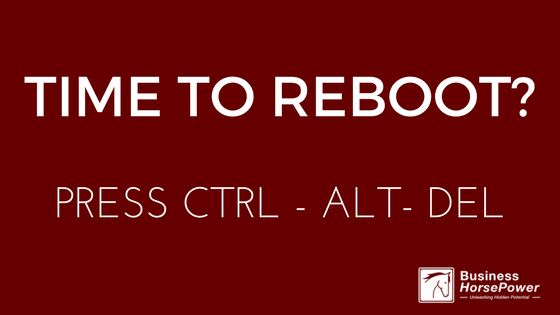
by Julia Felton | May 4, 2017
Firstly, many apologies for this week’s Wednesday Wisdom being a day late. As you might have seen my computer had a major meltdown yesterday and threw my day into disarray. It’s amazing what happens when you don’t have a computer. I literally couldn’t do anything. It was super frustrating and I kept battling on but everything took ages to do.
Basically, in a nutshell what had happened was that my computer had been infected with some adware that meant that every time I hit return on my keyboard it automatically took me to another page. After hours of frustration I finally called my lovely computer man who came out at 7pm at night – now that is what I call customer service – and after 2 hours finally managed to fix it. What was interesting was that on face value everything looked fine on my computer. There were no rogue files in the usual places and no illegal programmes installed.
Eventually, through trial and error, he found the pesky bug embedded deep within a seemingly innocuous add in for my internet browser. There was nothing about the add in on face value that seemed malicious and yet it clearly was the cause of all the problems. He had to reboot everything to make everything work again and I’m delighted to say I am now back in business.
Reflecting on this incident I have been fascinated to see the parallels between what happened with my computer and what I observe happening to some of my clients. I’m sure you have often heard the brain being referred to as being the operating system of your body. It is what makes everything run smoothly and just like my computer everything on the surface can appear fine, but then from a dark, hidden corner of your mind some limiting beliefs come up that just prevent you from taking action. Just like the adware did to me. Examples of some limiting beliefs could be fear of public speaking, fear of sales conversations or fear of being visible in your business.
The irony is that those limiting beliefs, many of which you are unconscious of, were embedded whilst you were growing up. They are hidden deep in your psyche and can be very difficult to detect, but rest assured they are impacting everything you do. When you come across them there is nothing else to do but deal with them head on, and if you can’t detect them, then find an expert who can help you, just like I did with my computer man.
Of course, once you have detected the limiting belief and removed them you can then reboot your system. Just like your computer slows down if you leave it turned on for too long, so does your mind and body. That is why sleep is so important to help renew and refresh us. But sometimes you just need to do a ctrl-alt-delete and just reboot everything and restore it to factory settings. Ironically that is what I had recently decided to do with my health. So on Monday I started a 90-day reboot programme. I’m curious to see what happens over these next 90 days as I reset my body to stop craving sugar and carbohydrates. I’m sure my energy levels will soar and I will get more motivation as well as release some excess weight. I’ll keep you posted on how it goes.
The same principles also apply to your business. Sometimes your business needs a reboot or a jump start to get it into action which I why I am delighted to be offering one day Jump Start Your Business Intensive Days with me. We’ll analyse what is working and not working in your business and then create a plan to move forward so that we can get your business into flow. To find out more just give me a call. You can book into my diary here.
And as an added incentive to get to into action I have decided to offer a massive 40% reduction on my normal fees for anyone booking and paying in full before 12th May. So if you’ve ever wanted to work with me but thought you couldn’t afford it, now is the time to take action. Simply book in for a call and let’s start rebooting your business.
I can’t wait to hear from you.

by Julia Felton | Feb 15, 2017
From my extensive research I have found that successful people all have one thing in common. They get up early in the morning and have a very specific routine that they follow, no matter what. It is this routine and consistency each and every morning that sets them up for success.
Starting and maintaining a positive morning routine is an investment of a life time. It provides structure, builds life-changing habits, and creates momentum for the rest of your day. According to research, when you create and follow a morning routine, your stress and anxiety levels will begin to plummet and your life satisfaction levels will begin to soar.
In the words of Hal Elrod, author of The Miracle Morning:
“How you wake up each day and your morning routine (or lack thereof) dramatically affects your levels of success in every single area of your life. Focused, productive, successful mornings generate focused, productive, successful days — which inevitably create a successful life — in the same way that unfocused, unproductive, and mediocre mornings generate unfocused, unproductive, and mediocre days, and ultimately a mediocre quality of life. By simply changing the way you wake up in the morning, you can transform any area of your life, faster than you ever thought possible.”
If you want to make your morning routine stick, focus on making it a habit. A healthy morning routine instills a sense of purpose, peace and productive ritual to your day.
Sir Richard Branson, founder of Virgin Group, says maintaining a good morning routine is no different than having a positive outlook.
“Over my 50 years in business I have learned that if I rise early I can achieve so much more in a day, and therefore in life. No matter where I am in the world, I try to routinely wake up at around 5am. By rising early, I’m able to do some exercise and spend time with my family, which puts me in a great mind frame before getting down to business.”
One of my goals for this year is to instill a better routine into my mornings. One that I stick to no matter what. There is no best formula for how your morning should look but some of the activities that successful people do every day include meditation, exercise, stretching and drinking green smoothies. Then prioritising their top three income producing activities of the day, which they then execute. What they don’t do is get out of bed, react to emails, jump on social media and then find its lunchtime and half the day has already disappeared.
Each and every day there will always be important and urgent tasks that you have to get done, such as client work and sales conversations but there are also a raft of tasks that are important and non-urgent. These important and non-urgent tasks include eating well and making sure you are taking care of yourself. Let’s face it you can serve no-one if you are exhausted and not up to the job. And yet time and time again I come across business owners that have not prioritised their personal well-being in their daily schedule. They keep saying they don’t have time for exercise and yet studies [keep showing] SHOW that exercise helps make us more productive. This is the conundrum. We keep thinking we don’t have time when actually if we don’t take the time to do these things we won’t be able to sustain running a successful business.
Like everything, when you start to implement your morning routine, start with small steps. If you currently get up at 7am then trying to get up at 5am will be a stretch. Why not just get up 15 mins earlier for a week and then the next week another 15 mins earlier. Soon you will reach your goal. Likewise, don’t try and meditate for an hour, 15 mins is a great start. It’s the same with exercise too. If 30 mins seems to long start with just 15 mins. Like everything it is the intention and commitment to take action that is JUST as important as the duration of the activity.
So, what are you going to do today to start putting better morning routines in place? I’m going to take some of my own medicine now and go for a run!
Wishing you a great flow filled week.

